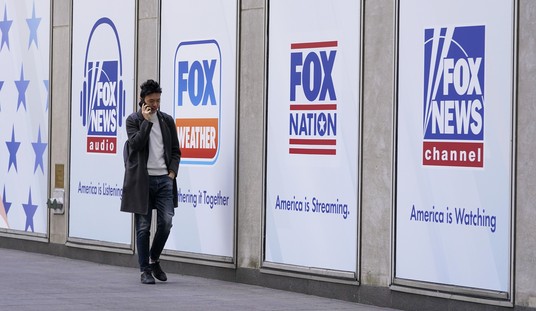"Back in the day," some say, and the rest of the sentence is sure to be some ode to the good old years. "Wait until tomorrow," others advise, and the rest of the sentence is likely to be a surmise about how great the future will be.
But history is not a straight line. Societies rise and decline, but often not in constant movement. Think of a roller coaster that doesn't loop but actually goes somewhere: At any particular moment the movement may be upward or downward, but the cars always move forward.
Some say the film equivalent of the Great American Novel is The Godfather, but that trilogy depicts America as a tragedy. The Rocky series—leaving out the execrable Rocky V—is a better representation of the American Dream. But if you're looking for the American Nightmare, try Death Wish III (1985), the second sequel to the famous Death Wish (1974) starring Charles Bronson as Paul Kersey, a man who takes vigilante action following the murder of his wife and rape of his daughter by feral muggers.
In Death Wish III, Kersey returns to a New York City (Death Wish II has him cleaning up part of Los Angeles) filled with uncivil war. A .38 revolver is child's play: Kersey's adversaries form a wild army, and against them his weapons of choice include a Wildey .475 caliber handgun, a Browning air-cooled machine gun, and a L.A.W. (light anti-tank weapon) handheld rocket launcher. Many decent folks are killed but the body count is especially high among the hoodlums, dispatched to the cheers of previously cowed residents watching from their apartment windows.
I'm not recommending Death Wish III except as an over-the-top study of what could have happened to America's cities—but veteran journalist Pete Hamill notes in Downtown (Little Brown, 2004) that "by the 1970s menace was becoming more general." Here's his description of New York City: "Children of ten and eleven formed packs, attacking the shoppers from Macy's and Gimbel's like schools of piranha fish. The newspapers called them 'feral youths.'. . . Toward the end of the 1970s, every New Yorker, male and female, white, black, and Latino, had learned to live with fear. . . . Every apartment door seemed to have three locks, including a steel bar that was jammed into a slot in the floor."
Recommended
In the early 1990s, Hamill continued, "The marquees of the grind houses along the Deuce [42nd St.] advertised films about emotionless sex or raw fear or both. And as time passed, a visitor heard something else in the aural compost of the street: the crunching sound of crack vials . . . . [Children] grew up in a world of plague, where the combination of drugs, guns, illiteracy, casual violence, and the rise of AIDS was creating a nihilistic hell never imagined by Dante Alighieri."
There's more, but you get the picture—a picture not that different from Death Wish III. And yet, Hamill is one of many to notice Manhattan's turnaround during the past 15 years. Shoppers fill Macy's. Herald Square, adjacent to the big store, is now a calm place where midtowners sit and read in the afternoon sunshine. Midtown feral youth packs are no more. The biggest complaint about 42nd Street is that it's "too nice." Couples walk at midnight unafraid.
How did it happen? Better policing, sure. A Manhattan economic boom, sure. Hamill notes that "the city first cleaned up Bryant Park, on the eastern side of Sixth Avenue, turning it into a sylvan gem to be used by ordinary citizens instead of pushers and junkies" (See WORLD, April 19, 2008). Then, "inspired citizens, real estate people, members of foundations, hardworking bureaucrats, drafters of zoning laws, and architects" saved Times Square. One change led to another, and compassion grew: "Special plainclothes cops watched for runaways, saving them from the predators, gently persuading them to go home."
Hamill writes that "sometimes miracles do happen"—and given the growth of key New York churches, that may be truer than he knows. As this issue shows, cities are places full of human beings made in God's image yet steeped in sin. As thousands of their residents move from death wishes to prayer, through God's grace, the whole nation should rejoice.


